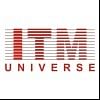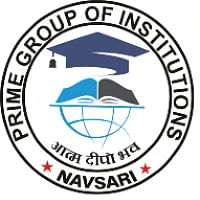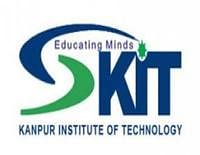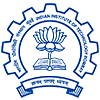| Topics |
Syllabus |
| Measurements in Chemistry |
- SI units for fundamental quantities, significant figures in calculations.
|
| Mole Concept |
- Avogadro number and mole concept, molar masses, mole fraction, molarity, molality, percent composition, stoichiometry.
- Equivalent weight and normality.
- Calculations based on the mole concept and stoichiometry of different reactions.
- Oxidation-reduction reactions.
|
| Gaseous and Liquid States |
- The absolute scale of temperature. Gas laws, ideal gas equation, real gases and deviation from ideality, Liquefaction of gases, van der Waals equation.
- Kinetic theory of gases; average, root mean square and most probable velocities and their relation with temperature.
- Law of partial pressures.
- Vapour pressure.
- Diffusion of gases.
|
| Atomic Structure and Chemical Bonding |
- Bohr model, the spectrum of hydrogen atom, quantum numbers.
- Wave-particle duality, de Broglie hypothesis.
- Uncertainty principle.
- Orbitals and quantum numbers; shapes and energy of s, p and d orbitals.
- Electronic configurations of elements (up to atomic number 36), filling of orbitals - Aufbau principle.
- Pauli’s exclusion principle and Hund’s rule. Hybridization involving s, p and d orbitals.
- Atomic orbital overlap and chemical bonds; ionic, covalent and coordinate bonds; bond parameters.
- Orbital energy diagrams for homo-nuclear diatomic species.
- Lewis structures.
- Hydrogen bond.
- Polarity in molecules, dipole moment (qualitative aspects).
- VSEPR theory and shapes of molecules.
- Valence Bond Theory.
- Molecular orbital theory of homonuclear diatomic molecules (qualitative idea).
|
Thermodynamics: Thermodynamics States
|
- First law of thermodynamics.
- Internal energy, work, and heat, pressure-volume work.
- Enthalpy and enthalpy change, Hess’s law, the heat of - reaction, fusion, and vaporization.
- The second law of thermodynamics, entropy, free energy, Criterion of spontaneity.
|
Chemical Equilibrium
|
- Laws of Chemical Equilibrium, the law of mass action.
- Equilibrium constant – factors affecting equilibrium constant and its applications.
- Le Chatelier's principle - effect of concentration, temperature and pressure.
- Significance of ΔG and ΔGo in chemical equilibrium.
- Relationship of K and ΔG. Ionic equilibrium.
- Acids and bases (Bronsted and Lewis concepts), salts. Ka, Kb, KW, the degree of dissociation, pH and their relationships.
- Solubility product, common ion effect.
- Hydrolysis of salts.
- Buffer solutions.
|
Electrochemistry
|
- Redox reactions and electrode potential, Electrochemical cells, Galvanic cells and cell reactions.
- Standard electrode potential. Nernst equation and its relation to ΔG and K.
- Electrochemical series, emf of galvanic cells. Electrolysis and Faraday's laws of electrolysis.
- Electrolytic conductance, specific, equivalent and molar conductivity, Kohlrausch's law.
- Concentration cells.
- Batteries (primary and secondary), fuel cells, corrosion.
|
Chemical Kinetics
|
- Rates of chemical reactions.
- Order of reaction, the rate constant.
- First order and pseudo-first order reactions.
- Factors affecting rate of reaction – concentration, temperature (Arrhenius equation), catalyst.
|
Solid State
|
- Classification of solids, amorphous and crystalline solids, crystalline state, crystal lattice and (cubic), packing in fcc, bcc and hcp lattices.
- Packing efficiency, nearest neighbours, ionic radii.
- Simple ionic compounds, Imperfection in solids, point defects.
- Electrical and magnetic properties, band theory of metals.
|
Solutions
|
- A solution of solid and gas in the liquid.
- The concentration of the solution.
- Ideal and nonideal solutions. Colligative properties.
- Vapour pressure of the solution, Raoult's law.
- Molecular weight determination from lowering of vapour pressure, elevation of boiling point and depression of freezing point.
- Abnormal molecular mass, van Hoff factor.
- Osmosis – Osmotic pressure, reverse osmosis.
|
Surface Chemistry
|
- Adsorption – Physisorption, and chemisorptions.
- Factors affecting the adsorption of gases in solids.
- Adsorption isotherm. Catalysis – homogeneous and heterogeneous, Activity and selectivity.
- Enzyme Catalysis.
- Colloidal state – Types, preparation, and properties of colloids.
- Tyndall effect, Brownian movement, electrophoresis, coagulation.
- Application of colloids.
- Micelles.
|
Inorganic Chemistry: Classification of Elements and Periodicity of Properties
|
- Modern periodic table, classification of elements, periodic trends in properties of elements – valence, oxidation state, atomic/ionic radius, ionization energy, electron gain energy, electronegativity, valence, chemical reactivity.
- Diagonal relationship.
- Anomalous behaviours of Li, Be, B, C.
|
Hydrogen
|
- Isotopes, preparation, isolation, properties and uses.
- Hydrides – ionic, covalent and interstitial.
- Properties of water and heavy water.
- Hydrogen peroxide – Preparation, structure, reactions, uses.
- Hydrogen as the fuel cell.
|
s- Block Elements (Alkali and alkaline earth elements)
|
- General characteristics and trends in properties.
|
Group 1
|
- Preparation, properties, and reactions of alkali metals with emphasis on chemistry of Na and K and their compounds-oxides, peroxides, hydroxides, carbonates, bicarbonates, chlorides and sulfates, Uses.
|
Group 2
|
- Preparation, properties and reactions of alkaline earth metals with emphasis on the chemistry of Mg and Ca and their compounds-oxides, peroxides, hydroxides, carbonates, bicarbonates, chlorides, and sulfates, Uses.
|
| p- Block Elements |
- General characteristics and trends in properties.
|
Group 13
|
- Chemistry of Boron and its Compounds - borax, boric acid and diborane.
|
Group 14, 15 and 16
|
- Chemistry of carbon, sulfur, nitrogen, and phosphorus.
- Allotropy.
- Chemistry of oxides and oxyacids of these elements.
- Phosphines, phosphorus chlorides, ammonia, peroxide and ozone; silicones, silicon tetrachloride and silicates.
|
Group 17
|
- Chemistry of halogens, the chemistry of chlorine in detail.
- Interhalogen compounds.
- HX and oxyacids of halogens.
|
Group 18
|
Isolation, properties, and reactions of inert gases with emphasis on chemistry of Xenon. |
d- Block Elements
|
- (Mainly 3d elements) General characteristics and trends in properties.
- Variable oxidation states and their stabilities, colour (excluding the details of electronic transitions) and calculation of spin-only magnetic moment.
- Catalytic properties. Interstitial compounds, alloy formation.
- Preparation and properties of potassium dichromate and permanganate.
|
f- Block Elements
|
- (mainly lanthanides) General characteristics and trends in properties.
- Variable oxidation states.
- Lanthanide contraction and its consequences.
|
Coordination Compounds
|
- Nomenclature of mononuclear coordination compounds.
- Isomerism.
- Hybridization and geometries of mononuclear coordination compounds.
- Magnetic properties.
- Werner’s theory, VBT, CFT.
|
Metals and Metallurgy
|
- The occurrence of metals.
- General methods of extraction involving chemical principles – thermodynamic, electrochemical and redox principles.
- General operation stages involved in the metallurgical operation.
- Metallurgy of p-block element (emphasis on Al).
- Metallurgy of Fe-triad (more emphasis on Fe metallurgy).
- Metallurgy of coinage metals (Cu, Ag with more emphasis on Cu).
- Refining.
|
Organic Chemistry: Basic Concepts
|
- Representation of organic compounds.
- Hybridizations of carbon. Sigma and pi bonds.
- Shapes of simple organic molecules.
- The inductive effect, electromeric effect, resonance effect, hyperconjugation.
- Keto-enol tautomerism.
- Determination of empirical and molecular formulae (only combustion method).
- Hydrogen bond - definition and effect of physical properties of alcohols and carboxylic acids.
- Acidity and basicity of organic acids and bases.
- Methods of purification of compounds
|
Reactive Intermediates
|
- Homolytic and heterolytic bond cleavages.
- Formation, structure, and stability of - carbocation, carbanion and free radical.
|
Isomerism
|
- Structural and stereoisomerism.
- Geometrical isomerism.
- Chirality.
- Enantiomers.
- Optical isomerism of compounds containing up to two asymmetric centres, ( R, S, and E, Z nomenclature excluded).
- Racemic mixture.
- Conformations of ethane and butane (Newman projections).
|
Nomenclature:
|
- IUPAC nomenclature of simple organic compounds (only hydrocarbons, monofunctional and bifunctional compounds), including benzene derivatives.
|
Alkanes
|
- Preparation, properties, and reactions.
- The idea of homologous series Combustion and halogenation of alkanes. Mechanism of photo halogenation. Wurtz reaction.
|
Alkenes and Alkynes
|
- Preparation, properties, and reactions of alkenes and alkynes. Isomerization.
- The acidity of alkynes.
- Acid-catalyzed hydration of alkenes and alkynes (excluding the stereochemistry), Reactions of alkenes with KMnO4, sulphuric acid. Reduction of alkenes and alkynes.
- Preparation of alkenes and alkynes by elimination reactions (excluding stereochemistry).
- Electrophilic addition reactions of alkenes with X2, HX, HOX and H2O (X=halogen).
- Makownikoff rule. Peroxide effect. Polymerization of Alkenes.
- Addition reactions of alkynes.
- Metal acetylides.
- Ozonolysis
|
Aromatic Compounds
|
- Aromaticity.
- Huckel theory of aromaticity.
- The structure of benzene.
- Isomerism in substituted benzenes.
- Electrophilic substitution reaction on benzene- General mechanism.
- Orientating influence of substituents in electrophilic substitution reaction of monosubstituted benzenes.
- Electrophilic substitution reactions of benzene and substituted benzenes - halogenation, nitration, sulphonation, Friedel-Crafts alkylation and acylation (No mechanism).
|
Haloalkanes (Alkyl Halides)
|
- Preparation from alkanes, alcohols, olefins. Grignard reagents and their reaction with aldehydes/ketones/esters/nitriles.
- Nucleophilic substitution reactions of alkyl halides with different nucleophilic species.
- SN1 and SN2 reactions with the mechanism.
- Halogen exchange reaction.
- poly-halogen compounds.
|
Haloarenes
|
- Nucleophilic aromatic substitution in haloarenes and substituted haloarenes (excluding Benzyne mechanism and Cine substitution).
|
Alcohols
|
- Preparation of – olefins, alkyl halides, carboxylic acids, aldehydes/ketones.
- Hydroboration reaction. Dehydration, oxidation of aldehydes and ketones.
- Reaction with sodium, phosphorus halides, ZnCl2/ HX, H2SO4. Identification of p-, sec- and test- alcohols.
- Uses of methanol and ethanol.
|
Phenols
|
- Preparation of phenol from halobenzene, cumene, and benzene sulphonic acid.
- Acidity.
- Reactions of phenols - halogenation, nitration, sulphonation, with Zn. Reimer-Tieman reaction, Kolbe reaction.
|
Ethers
|
- Preparation by Williamson's Synthesis, dehydration of alcohols.
- Reaction with H2O, HX.
|
Aldehydes and Ketones
|
- Preparation of aldehydes and ketones from – Alcohols, olefins, acid chlorides, aryl alkynes, nitriles, esters, Friedel-Crafts reaction.
- Reactions with – Alcohols, HCN, NaHSO3. Reactions- oxidation, reduction, oxime, and hydrazone formation.
- Aldol condensation, Perkin reaction.
- Cannizzaro reaction.
- Haloform reaction.
- Tests to distinguish aldehydes and ketones.
|
Carboxylic Acids
|
- Acidity and structure-acidity relationship. Preparation of acids.
- Preparation of amides, acid chlorides, esters, and anhydrides. ester hydrolysis.
- Reactions of acids with - thionyl chloride, P-halides, ammonia, alkalis, metals, halogens, reducing agents.
- Decarboxylation.
- Halogenation.
|
Amines
|
- Basicity and structure-basicity relationship.
- Identification of p-, sec- and test-amines.
- Preparation of amines from - nitro compounds, nitriles, amides, haloalkanes/aromatic compounds.
- Reaction with – Acids, alkylating agents, acylating agents, nitrous acid.
- Diazotization of aromatic primary amines- Reactions of aromatic diazonium salts - azo coupling reaction, Sandmeyer, and related reactions.
- Carbylamine reaction of p-amines
|
Carbohydrate
|
- Classification of carbohydrates. mono- and di-saccharides (glucose and sucrose).
- Characteristic tests.
- Structure of glucose.
- Reactions of glucose- Oxidation, reduction, hydroxylamine, HI, acetic anhydride.
- Cyclic structure of glucose.
- Structures of - Sucrose, maltose, starch, and cellulose.
- Glycoside formation and hydrolysis of sucrose.
|
Amino Acids and Proteins
|
- α-amino acids.
- The general structure of peptides and proteins.
- Peptide bond.
- Characteristic tests.
- Separation of amino acids using physical properties.
- Denaturation of proteins.
- Enzymes.
|
Polymers
|
- Classification.
- Homo and copolymers, Addition and condensation polymerizations.
- Polythene, nylons, polyesters, Bakelite, melamine-formaldehyde, rubber – natural and synthetic.
|


















